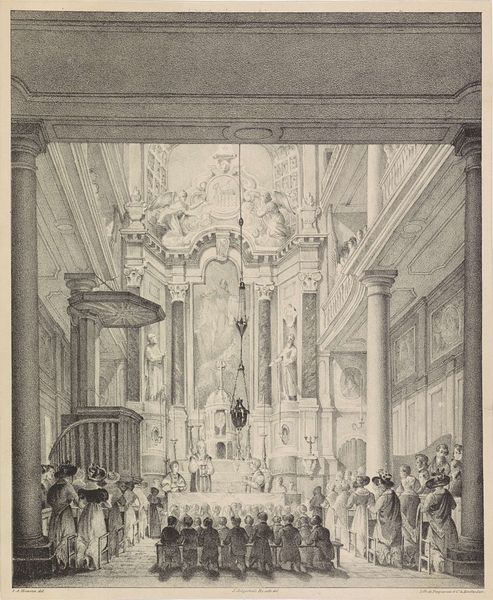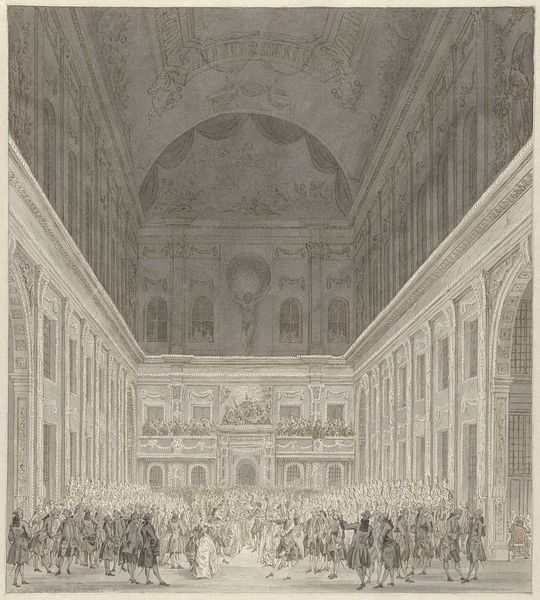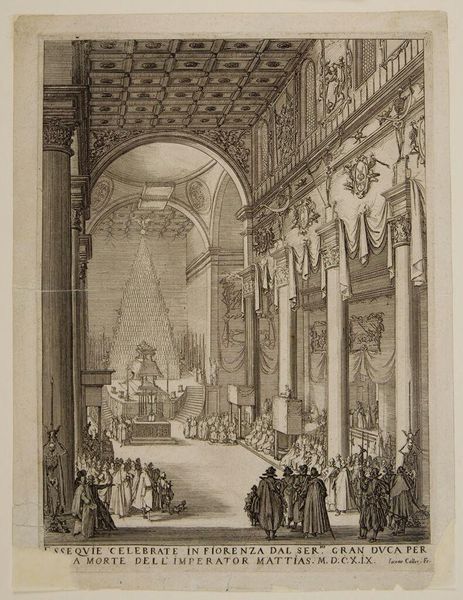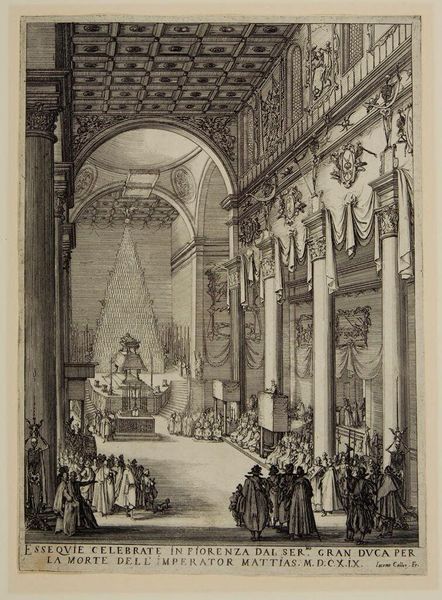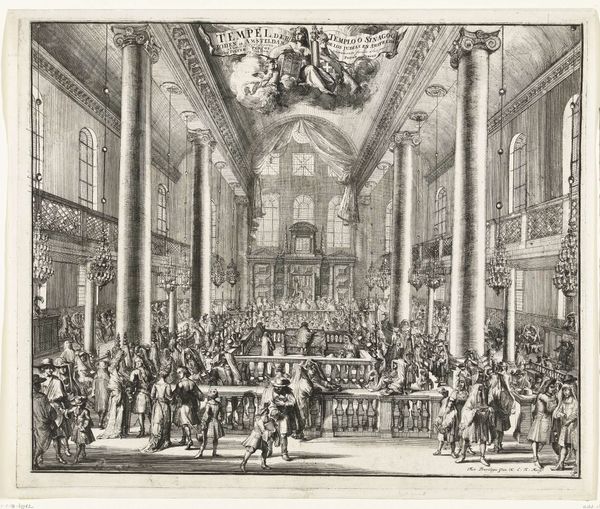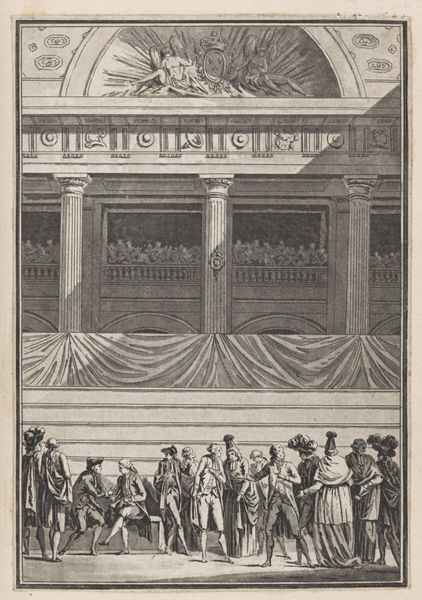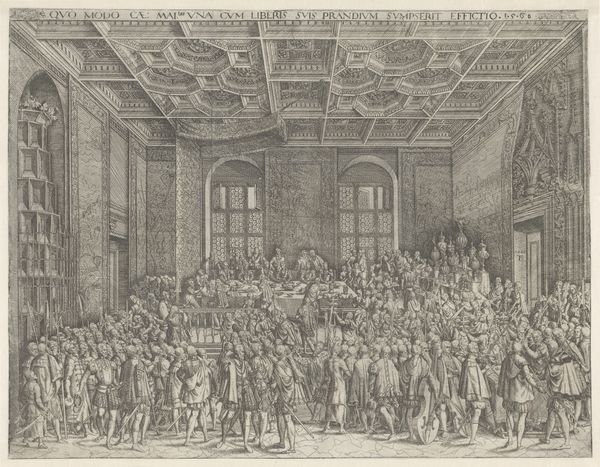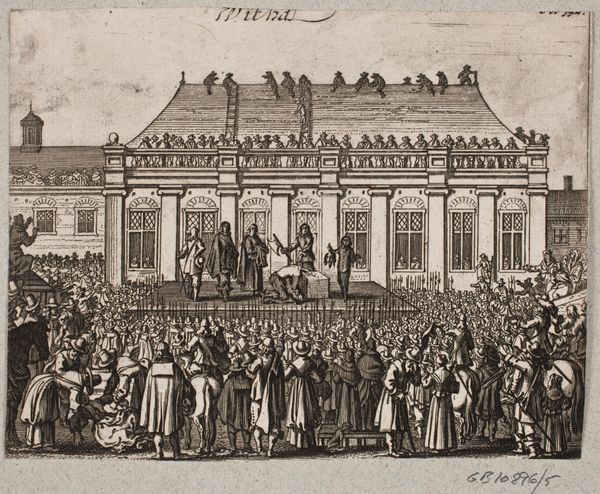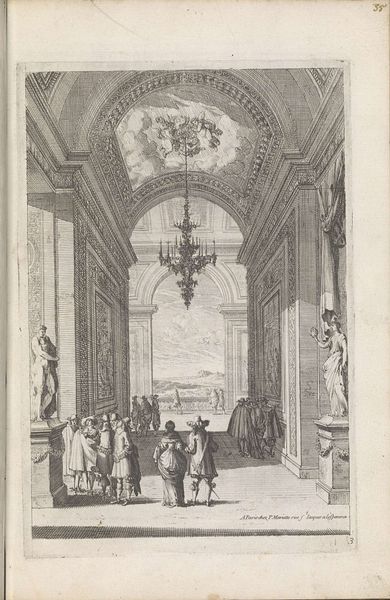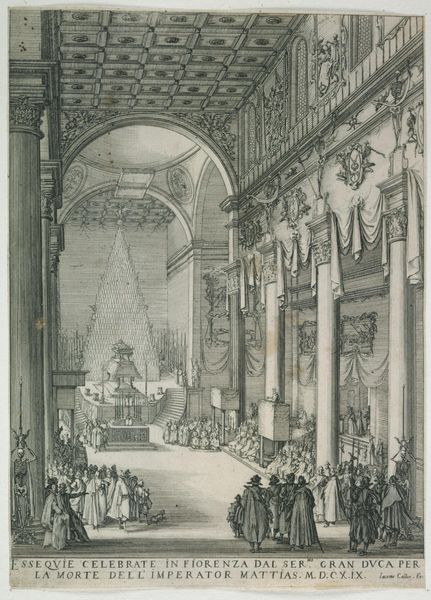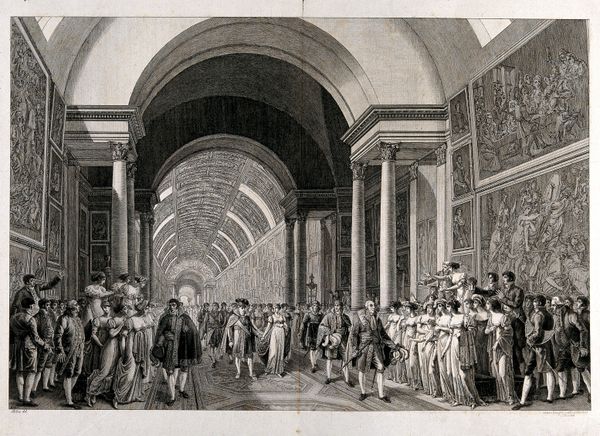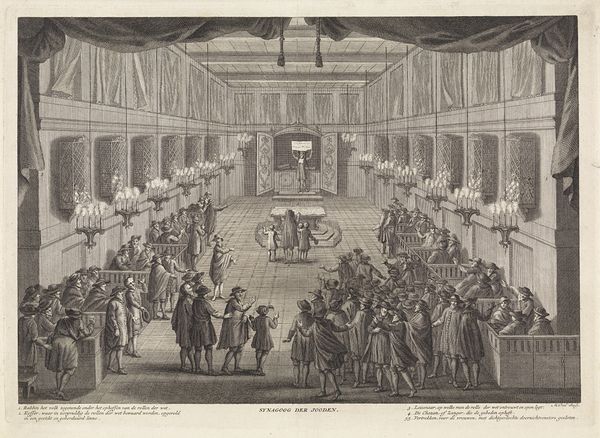
Dimensions: 465 × 367 mm (image); 524 × 396 mm (sheet)
Copyright: Public Domain
Editor: We're looking at "Royal Feast," an etching from 1782 by Jean Michel Moreau the Younger, currently residing at the Art Institute of Chicago. It depicts an elaborate banquet scene; the sheer scale of it is astounding, the detail is mesmerizing, but there's almost too much going on. What do you see in this piece, from a symbolic perspective? Curator: The very idea of a royal feast resonates with powerful, deeply embedded symbolism. Think of the wedding feast in the Bible, or the Arthurian round table. Food and celebration have always been tied to power, status, and social cohesion. But look closer – do you notice anything unsettling amidst all the finery? Editor: Unsettling? Well, everyone seems so busy, but also…a bit stiff? Like they’re performing, not celebrating. Curator: Precisely. The carefully choreographed movements, the excessive display… It evokes a sense of unease, perhaps a premonition of the social upheaval that was brewing in France at the time. The opulent chandeliers, the endless columns…what do they tell us? Editor: That there's an overabundance of wealth on display. The chandeliers and the columns feel…repetitive, and almost overwhelming, like the artist is trying to convey excess. Curator: Exactly! Remember that images communicate through visual language. Here, Moreau uses repetition to signify not just abundance, but perhaps even a kind of suffocating opulence, detached from reality. It’s a potent reminder of the symbolic weight even seemingly simple genre scenes can carry. And of course, the figures and their expressions contribute greatly to that reading. What did you learn about this artwork? Editor: I'll never look at a lavish feast the same way! It is far more complex than initially perceived and full of history and subtle tension. Thank you.
Comments
No comments
Be the first to comment and join the conversation on the ultimate creative platform.
